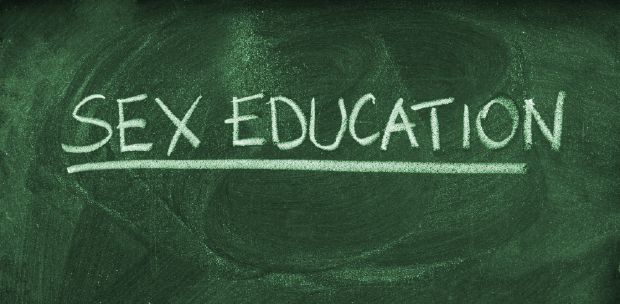Many students in the LGBT community are reporting that Clark County School District’s sex education curriculum, even online, can be ostracizing to anyone who doesn’t fit the “straight, cisgender” mold. According to students, CCSD’s version of health and sexual education does not address all sexualities, except in regards to negative connotations and dangers.
Nevada Revised Statutes, the laws that mandate the curriculums in Nevada, specify that sex education is a “course of instruction concerning acquired immune deficiency syndrome, human reproductive system, related communicable diseases and sexual responsibility.”
And while these may be considered the fundamentals of sexual education, students say they are isolating. According to senior Adara Pesqueira, the focus on biology and reproductive values in sex education classes can be ostracizing because it excludes LGBT students and limits their inclusion when sex is only discussed as a matter of procreation.
“Going back to when I was in sex education, there was not a single gay couple in the book,” Pesqueira said. “They were all straight people, every single one of them. It was from the ‘90s, so that tells you how outdated it is. There was nothing about gay people at all.”
Another NRS regulation is that “materials [are] to be made available to parents or guardians of pupils.” The brief summarization that Spring Valley provides to parents states that no aspect of the class discusses sex as a non-survival, evolutionary necessity. This, consequently, means that no aspect of the class includes the LGBT community, as homosexual couples can’t procreate.
“To be in a class that promises sexual education just for the content to not even apply to you can feel pointless and is anything but dignifying,” senior Ardian Agolli said. “But I don’t think kids will turn a blind eye to the curriculum if the subject matter relates to them. If sex education directly benefits us, engagement will be present.”
According to students, when gay sex education is addressed, it is only in regards to diseases and dangers associated with it, which can tie a negative connotation to the sexuality itself. In a National School Climate Survey by the Gay, Lesbian and Straight Education Network, only 4% of students were taught “positive information” about LGBT people in their health classes.
“One example I remember was learning about HIV, and that conversation was the only mention of homosexuality in the entirety of the class,” Agolli said. “I felt guilty and uneasy that my sexual orientation was reduced to nothing more than a catalyst for one of the largest sexually transmitted infections in all of American history.”
In CCSD, only half a credit of health is required to graduate. Within this semester-long sex education class, there are three units: the human reproductive system, sexual responsibility and communicable diseases. All lessons and curriculum decisions are regulated by CCSD and the Sex Education Board. Additionally, all students are required to have a signed parent/guardian consent form before they are allowed to sit in any discussion regarding sex and its related subjects.
“We don’t ever cover or talk about anything that has to do with the pleasure of sex,” Spring Valley health teacher Adam Gent said. “It’s strictly the anatomy, strictly what statistics and STDs to be aware of, which is super important. When I was in high school, I remember my health teacher telling me that one out of four sexually active teenagers had an STD, and I remember being blown away. Because I was taught that, it made me more aware and more careful about the decisions that I was going to make.”
State regulations that are highly biologically-specific prevent health teachers from discussing specific sexualites, according to Gent, but the curriculum clearly highlights the reproductive value of sex, and implies that this is the main purpose. This then excludes all students who have sex for reasons outside of reproductive purposes.
Gent continued that if teachers were to stray from the guidelines, they would be in jeopardy of losing their license. Because of this, Gent said he often tries to be as vague as possible when addressing sexuality, in an attempt to include as many students as possible within the strict limitations given to him.
“There has been a great effort to teach the curriculum in a way that it can be applied to all genders, all backgrounds, all identities. Hopefully it’s taught in a way that doesn’t exclude anybody,” Gent said. “As a teacher, I want every single student to feel included, regardless of their sexual orientation or their gender identity. It’s so important that everybody feels comfortable and involved.”
This lack of education may cause gay students to face the same dangers that the class is attempting to protect straight students from.
“[Gay students] might hurt themselves if they don’t know how they are supposed to have sex safely,” Pesqueira said. “They can hurt themselves in the process of it, or they can even hurt themselves in the aftermath of having sex because they weren’t properly educated.We don’t want another epidemic just because nobody wants to talk about gay sex education.”
In CCSD’s sex education curriculum, abstinence is often the main focus of preventative measures taught to all students. However, an estimated 55% of teenagers today have sex by the age of 18, according to a 2017 report by the Center for Disease Control’s National Center for Health Statistics.
“I think the most important part of general sex education is actually talking about sex and not just throwing it under the rug and pretending it doesn’t exist and just saying ‘Abstinence, okay we’re done with this subject,’” Pesqueira said. “Keeping it undercover will only make kids want to do it more. If it was done properly, there would be lower chances of pregnancy, lower chances of STDs, and kids would feel more open to talk about it, which would promote an inclusive environment.”










